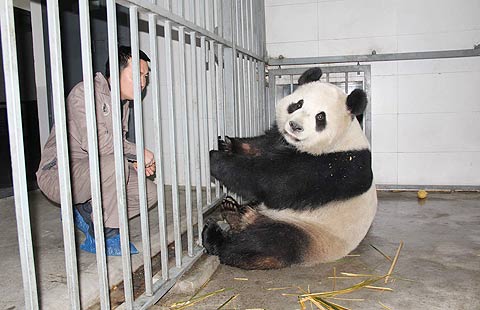Caution tempers trade optimism
Updated: 2014-02-22 07:26
By Xu Hongcai (China Daily)
|
|||||||||||
Compared with the still sluggish domestic and international markets, China's performance on the foreign trade front in January was quite an achievement, more so because domestic manufacturing, power generation, crude steel output and related industrial sectors showed a decline in growth vis-a-vis last year.
More importantly, the pressure created by the appreciating yuan is still high internationally and the global economy still faces uncertainties. In particular, the tapering off of the US quantitative easing policy will cause capital to flee back to the US and result in currency devaluation in some emerging economies.
|
 |

|
The Ministry of Commerce has vowed to continue its policies to maintain "a stable increase" in foreign trade this year, and readjust the import-export structure and grant export rebates to some industries.
The government is likely to expand the scope of importing advanced technologies and critical equipment, as well as fuel and raw materials. But, at the same time, it should ensure that traditional service exports - transportation and tourism, for instance - and newly developed service exports in insurance, telecommunications, and research and development sectors continue to grow. It should also help develop new growth points such as cross-border e-commerce and other service sectors.
Since the deficit in China's service industry, mainly in transportation and tourism, is relatively large, the government should open more zones like the China (Shanghai) Pilot Free Trade Zone that offer favorable policies to attract large investments and facilitate the rapid growth of the service sector.
The 2013 Central Economic Work Conference listed "stabilizing foreign trade" as one of the major economic missions of the country and proposed building a modern "Maritime Silk Road" to strengthen ocean trade with neighboring countries. If successful, the modern "Maritime Silk Road" could be a new growth point in 2014.
Therefore, despite the challenges, this year should be better for China's foreign trade than 2013.
The author is a professor in finance and director of the Information Department of China Center for International Economic Exchanges.
Don't miss:
|
 |
 |
| China's top 10 richest cities |
Related Stories
China remains Vietnam's 3rd largest export destination in January 2014-02-21 17:24
China's January trade data not inflated: Ministry 2014-02-18 17:32
On road to trade excellence 2014-02-15 08:03
Economists divided over surprising export strength 2014-02-14 15:11
China's 2013 service trade hits new high 2014-02-13 09:29
China foreign trade up 10.3% in January 2014-02-12 10:50
Today's Top News
China strongly opposes Obama-Dalai meeting
Tax refunds to lure overseas tourists
Prosecutors tackle food crimes
Year of Horse bringing baby boom
China firmly opposes Obama-Dalai meeting
Biden warns of Ukraine sanctions
Top advisory body prepares for session
Poly Culture plans IPO in HK
Hot Topics
Lunar probe , China growth forecasts, Emission rules get tougher, China seen through 'colored lens', International board,
Editor's Picks

|

|

|

|

|

|





